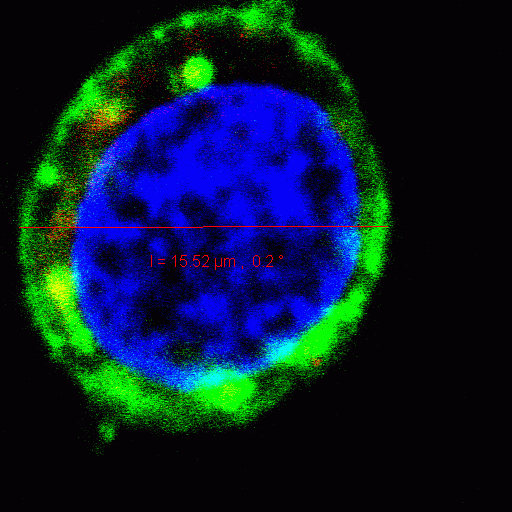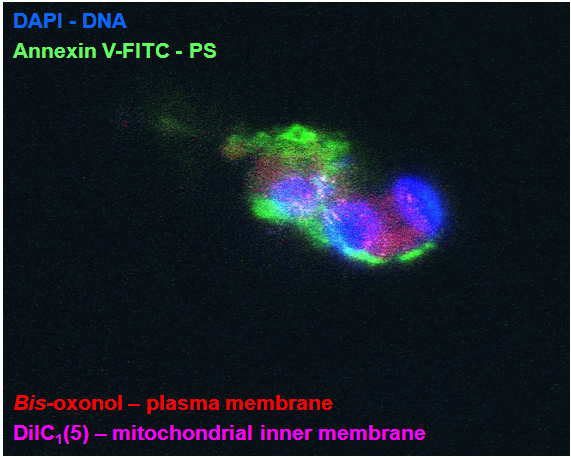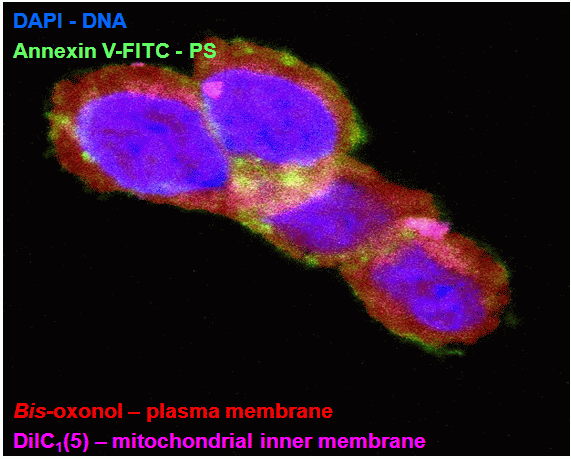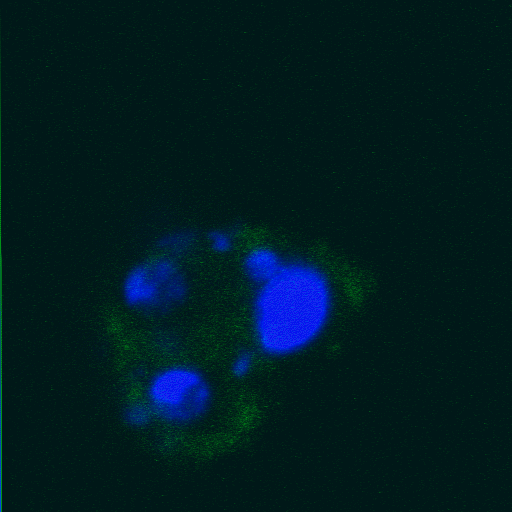Imaging mitochondrial membrane potential changes
Commonly employed reagents and cell treatments, such as staurosporine and UV-B irradiation cause mitochondrial membrane potential (mmp) to reduce before phosphotidylserine (PS) flipping. These changes in mmp can be detected by a range of fluorescent dyes, including carbocyanine's, DiO, DilC, and TMRM and MitoTracker Red (CMXRos). All these dyes show a fall in fluorescence as mitochondrial membrane potential falls during apoptosis.
DiIC is imaged in sorted dead cells counterstained with DAPI and sorted live cells
Imaging Annexin-V - Cell membrane changes
In normal cells, phosphatidylserine (PS) residues are found in the inner membrane of the cytoplasmic membrane. During apoptosis, the PS residues are translocated in the membrane and are externalized. In general, though not always, this is an intermediate event in apoptosis and is thought to be a signal to neighbouring cells that a cell is ready to be phagocytosed. Annexin-V is a specific PS-binding protein that can be used to detect apoptotic cells. Annexin-V is available conjugated to a number of different fluorochromes. The annexin-V positive and dead cells can be sorted and imaged by confocal microscopy.
- Sorted dead cell showing reduced mitochondrial function
- Sorted live cell showing active mitochondria
- Sorted apoptotic cell stained with annexin V-FITC
- Sorted dead cell stained with annexin V-FITC and DAPI
Imaging CyTrak Orange and DRAQ7 with Annexin V
The Biostatus dye CyTrak Orange stains the nucleus and defined areas within the cytoplasm. CyTrak Orange is excited at 543nm or 488nm and emits at 610nm, see figure.
The new Biostatus viability dye DRAQ7, which is excited at 488 and 633nm and emits at >665nm can be combined with Cytrak Orange stain and annexin V-FITC, see figure.




